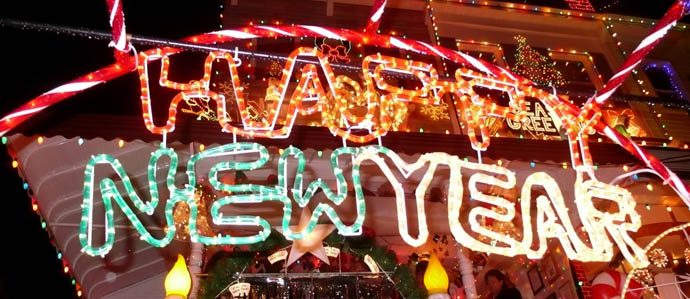2015 coming to an end… Nature Sacred and a Greenbiz post.

The other day I came across a blog post from Greenbiz.com titled “15 for ’15: The surprising breakthroughs of 2015.” These breakthroughs were noted by sustainability thought-leaders.
Before briefly characterizing and linking the piece, I offer 2 items not on Greenbiz’s list. Rather on another kind of sustainability list; but break-through nonetheless: (1) the non-profit “Nature Sacred;” and, (2) the international media.
(1) Nature Sacred was conceived in a London, England pocket park in 1995 by Tom and Kitty Stoner who happened upon it during a visit to that great city.
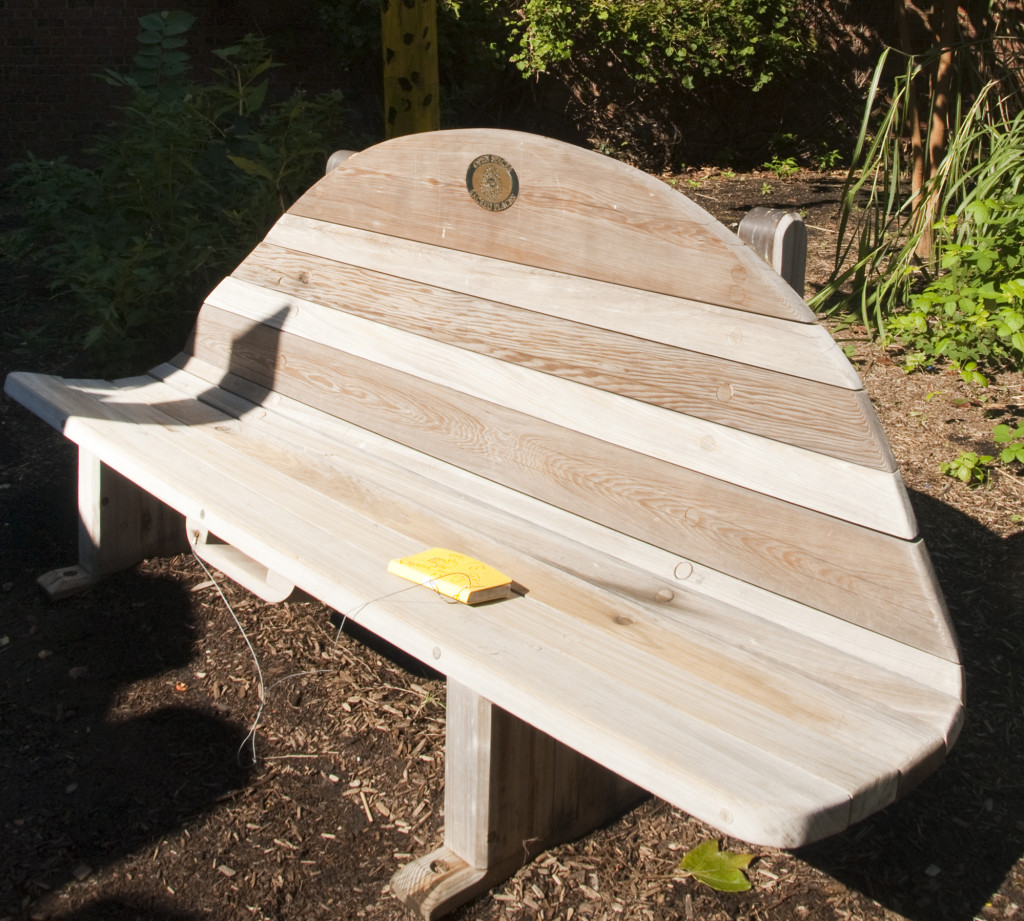
To quote from the Founders’ Letter: “It was Tom and Kitty’s belief that if an urban green space could provide such a place of sanctuary at such a difficult time in history [meaning WWII and the bombings of London], perhaps places conceived and created by urban communities in our time could also provide opportunities for reflection and rejuvenation. From this idea – and with this desire – the TKF Foundation was formed. The speed, violence and alienation that characterize our current period in human history create an important need for open spaces, sacred places. It is the Foundation’s hope that the spaces it has helped to support bring some peace and well being to people’s lives.”
From their founding of TKF Foundation, the Stoner’s funded small publicly-accessible urban parks where need was identified, first in the Chesapeake Bay area. The program at that time became known as Open Spaces Sacred Places. The signature piece of any installation is a bench make of reclaimed pickle barrel wood which the Stoner’s bought in very major quantity from an Eastern Shore, Maryland, facility. Since then, the wood has been crafted into beautiful yet sturdy benches by prison inmates learning carpentry.
Part of their conception for this life-sustaining project was that community organizations would identify individuals who would initiate and maintain these urban oases.
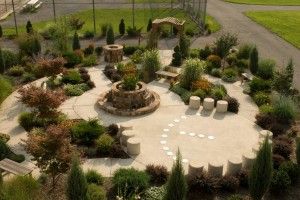
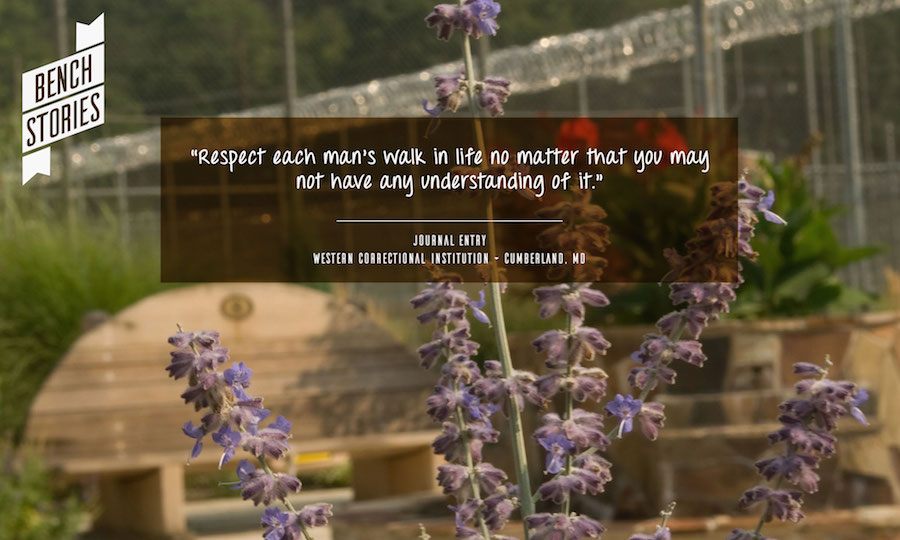
One of the early installations catching my attention is The Meditation Garden at the Western Correctional Institution in Jessup, Maryland. A feature in the garden that really speaks to me is a stainless steel tube of about 25′ in length which was sunk into the ground with a slotted opening at grade. Prisoners often write private messages that they then commit to the sanctity of the collection tube.
Besides the signature benches, or actually underneath in a metal sleeve, are waterproof journals which may be written in by visitors to express their thoughts and feelings while at rest on the benches. Each Open Spaces Sacred Places installation has a portal and other typical features. These are portrayed and described in a marvelous, beautifully-illustrated book of the same name.
Moving into a renaming of the organization in order to expand it intent, Open Spaces Sacred Places in now known as Nature Sacred. It is hosting ever more meaningful research in support of how much humans need open space for recreating, relaxing and healthful rejuvenating.
From one study, “Reflect & Restore: Urban Green Space for Mental Wellness,” comes these observations (footnotes omitted):
- “The experience of nature appears to be an antidote to the stress effects of urban living. In a key experiment people who viewed a video of a natural setting, after viewing a visual stressor, displayed faster and more complete physiological recovery than those seeing built environments.”
- “Comparing household medical records and natural amenities, those residents with only 10% green space within about half a mile had a 25% greater risk of depression and a 30% greater risk of anxiety disorders vs. those with the highest degree of green space near the home.”
While certainly not meaning to single out a single piece of research, that of Frances E (Ming) Kuo, PhD, is quite stunning. She has amalgamated much past research, carefully considering the human immune system and concludes in her peer-reviewed piece:
“The existing literature speaks to the value not only of “wild” nature but also “everyday” nature – the views and green spaces where we live. That physical activity is not consistently related to greener environments suggests that our conceptualization of health-promoting greenspaces should center at least as much on oases as on ball fields, and on greenspaces for walking and quiet contemplation as much as on recreation areas. The findings here suggest that such oases should incorporate plants — especially trees, soil, and water (preferably moving) — and should be designed to induce feelings of deep relaxation, awe, and vitality. Providing these green oases, especially in areas where health risks are high and landscaping is sparse, might be an inexpensive, powerful public health intervention and address persisting health inequalities.”
Back in the spring, I wrote about one of Nature Sacred’s largest undertakings, the Green Road Project at Walter Reed National Medical Center, now under construction.
(2) About the news media, world-wide, I’m just so appreciative for the increased, quality coverage of how we humans are either killing our environment or trying to revive it.
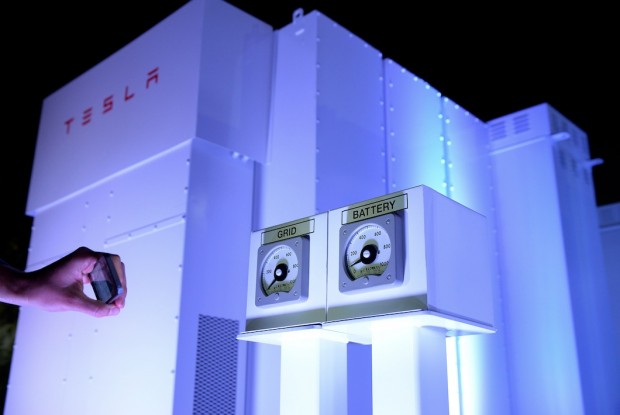
15 for ’15– Twice appearing on the list of 15 surprising breakthroughs in sustainability is Lyft, a ride-sharing transportation network. Another is StreetLight Data, suggesting how people actually move around in such ways as to better inform transportation planners, retailers and the like. Another, thanks to Google, is Project Sunroof which, as declared at its website, maps “the world’s solar potential, one roof at a time.” Tesla’s Powerwall is mentioned by 3 contributors. (Here’s the link.)
♠
